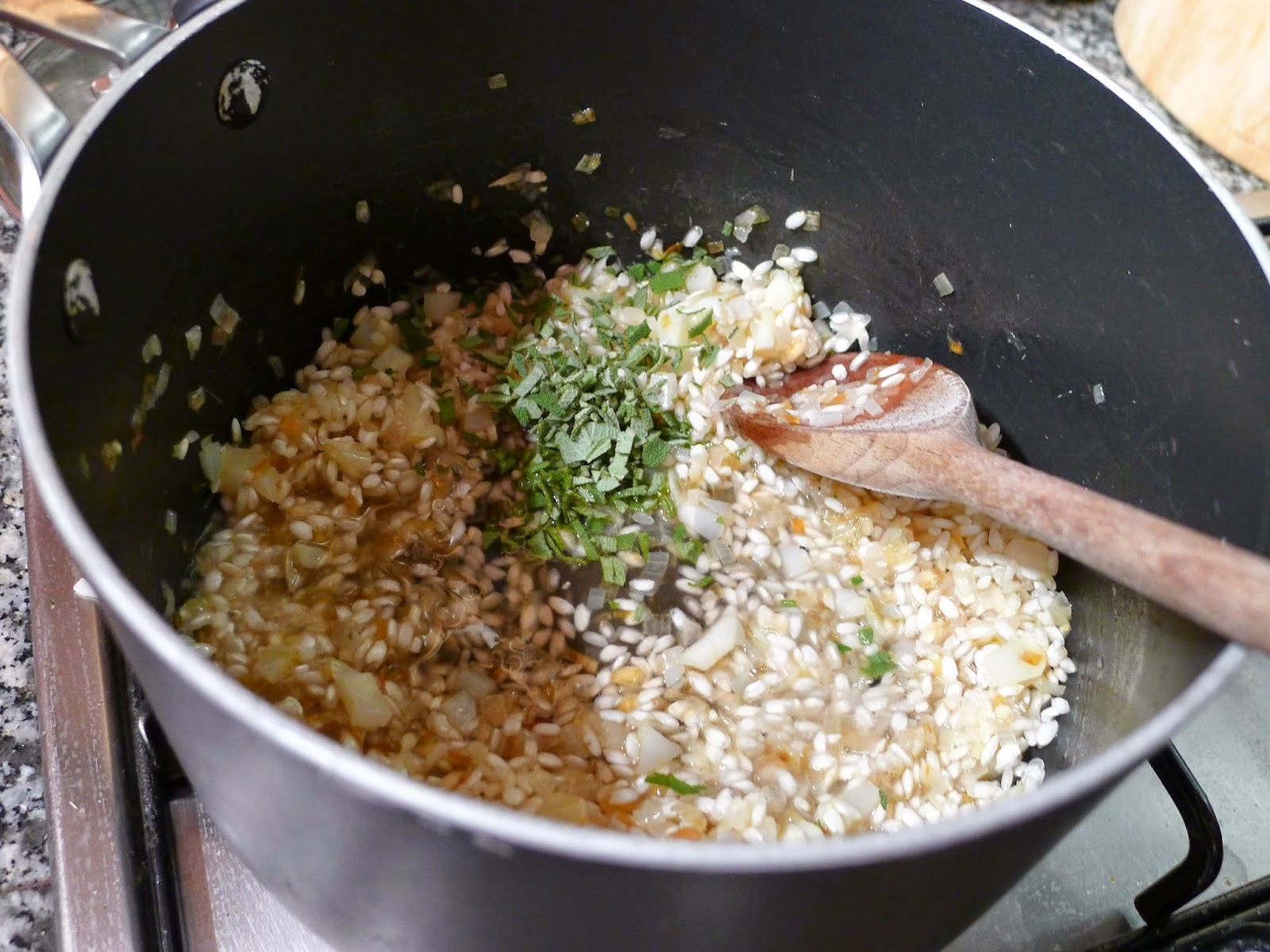It could well be one of my very favourites now. But lets face it I do have quite a lot of those.
Personally I think the addition of sherry gives it a slightly Spanish edge so if you can get Marcona almonds all the better. As it turned out the the almonds I had in the cupboard had gone rancid so I had to use almond flakes rather than chopped.
I’ve not written it into the recipe but a tip is that rather than throw the cauliflower stalks away when trimming the cauliflower into florets, chop them up finely and throw in with the shallots when you are sweating them: it gives an extra flavour dimension to the risotto, different from the roasted cauliflower topping.
You can use other any other soft cheese that will melt well such as taleggio, or perhaps in keeping with the Spanish angle try and source a Brie-style cheese from there.
Roasted Cauliflower, Sage & Almond Risotto
serves 2
250g cauliflower, trimmed and chopped
1 tbsp olive oil
sea salt and freshly ground black pepper
20g almond flakes
½ bunch sage, leaves picked
750ml hot chicken stock
30g butter
2 banana shallots, finely chopped
150g arborio rice
60ml dry sherry
20g finely grated parmesan
50g Brie de Meaux, sliced
You can use other any other soft cheese that will melt well such as taleggio, or perhaps in keeping with the Spanish angle try and source a Brie-style cheese from there.
Roasted Cauliflower, Sage & Almond Risotto
serves 2
250g cauliflower, trimmed and chopped
1 tbsp olive oil
sea salt and freshly ground black pepper
20g almond flakes
½ bunch sage, leaves picked
750ml hot chicken stock
30g butter
2 banana shallots, finely chopped
150g arborio rice
60ml dry sherry
20g finely grated parmesan
50g Brie de Meaux, sliced
Place the cauliflower, oil, salt and pepper on a baking tray and toss to coat. Roast for 15 minutes then add the almonds and half the sage leaves and roast for a further 5–8 minutes or until golden and crisp. Set aside and keep warm.
Melt the butter in a separate large saucepan over medium heat. Add the shallot and cook gently for 10 minutes or until soft and translucent.
Turn the heat up a little and tip in the rice. Stir around to coat for a minute or so before adding the sherry. Finely chop the remaining sage and throw that in too.
Gradually add the stock, 1 ladleful at a time. Allow the stock to be absorbed before adding the next ladleful.
Stir often but don’t worry about standing and stirring continuously until the stock is absorbed and rice is al dente. Probably between 20 and 30 minutes.
Stir through parmesan, and season carefully.
Cover, remove from the heat and leave to stand for 5 minutes before spooning into serving bowls. Top with Brie slices and the roasted cauliflower, sage & nuts to serve.

















































